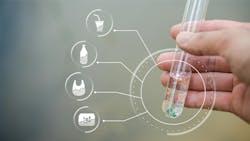Compliance: Microplastics Regulation Surges
Key Highlights
Highlights
Federal Momentum Building
The bipartisan Microplastics Safety Act (HR 4486) was introduced in July 2025, directing the FDA to study human health impacts of microplastics exposure in food and water.
Diverse State Approaches Creating Complexity
States are taking varied regulatory approaches - from Oregon's expanded single-use plastic bag bans to California's proposal to add microplastics to its Candidate Chemicals List.
Growing Call for Federal Leadership
Diverse state-by-state approaches are making commercial compliance increasingly complex.
This year has seen a significant increase in legislative, regulatory and policy initiatives involving microplastics. This momentum suggests more regulatory activity moving forward for quite some time, although in ways that are not always clear or predictable.
Federal Initiatives
Introduction of Microplastics Safety Act
A bipartisan bill (HR 4486) “[t]o direct the Secretary of Health and Human Services, acting through the Commissioner of Food and Drugs, to conduct a study, and submit to Congress a report, on the human health impacts of exposure to microplastics in food and water” was introduced on July 17, 2025. The bill seeks a study into pathways of microplastics exposures and whether these exposures impact human health, with a focus on children’s health, the endocrine system, cancer, chronic illness and reproductive health. The Secretary of Health and Human Services, through the U.S. Food and Drug Administration Commissioner, would conduct this study and issue a report to Congress on the findings and conclusions. The bill has been referred to the House Committee on Energy and Commerce.
The Make Our Children Healthy Again report was released May 22, 2025. It identifies microplastics as a contaminant that should be further studied to understand better the impacts of cumulative exposures. Microplastics are also discussed in a Congressional report published March 7, 2025. The report overviews both global and U.S.-specific plastic production, use and disposal statistics, and discusses microplastics as a source of freshwater and ocean contamination. The National Oceanic and Atmospheric Administration, as well, has ongoing research and studies into microplastics and associated impacts as related to oceans and marine life.
Key State Initiatives
Legislation related to microplastics introduced in 2025 at the state level has run the gamut from bans on single-use plastics to bans on specific products to study bills aimed at informing future legislation. Many jurisdictions are not targeting microplastics by name but instead are taking action to ban or limit products that break down into microplastics. Notable state actions in the microplastics regulatory space include:
- Oregon passed a bill relating to plastic waste (SB 551), an expansion of the state’s 2019 plastic bags ban. Effective in 2027, this law will limit establishments from providing single-use plastic bags to consumers.
- Several bills passed in previous legislative sessions have start dates or deadlines in 2025. Illinois’ Small Single-Use Plastic Bottle Act (SB 2960), passed in 2024, was effective July 1, 2025. This law prohibits hotels of certain sizes from providing customers with small bottles of “personal care products” (like shampoo and lotion).
Many bills introduced this year have already stalled or died in committee.
Minnesota’s SF 1389 would have sought a study on the presence of microplastics in meat and poultry, and it is the only state bill introduced this session that approached microplastics from an agricultural perspective.
Rhode Island’s SB 406 and HB 5492 both pushed for the creation of a state Microplastics Reduction Act, which would prohibit the sale or distribution of products containing synthetic polymer microparticles, among other administrative actions. Other unsuccessful bills sought to limit plastics products such as glitter and artificial turf because of concerns that these materials will degrade and create microplastic pollution.
California has proposed a rule that would add microplastics to the state’s Candidate Chemicals List (CCL). Inclusion on the CCL does not itself create any regulatory obligations but opens the door for tracking whether the contaminant is present in consumer products, in which case it can be designated a chemical of concern through rulemaking. The public comment period for the rule ended on Aug. 4, 2025.
Discussion
While the definition of microplastic is relatively consistent across jurisdictions, state approaches historically and in 2025 vary greatly. As states pursue and implement a diverse range of approaches, navigating commercial operations is expected to become more complex.
Industry groups, manufacturers and others in the regulated community may benefit from enhanced federal leadership that offers some measure of consistency and avoids the state-to-state jurisdictional differences that hamper commercial operations, or at the least make compliance measures difficult.
As state legislation begins to take shape and as research, regulatory and policy measures are more routine, the interest in federal action may increase as well. Stay tuned, as this is expected to be a very big deal.
About the Author
Lynn L. Bergeson, Compliance Advisor columnist
LYNN L. BERGESON is managing director of Bergeson & Campbell, P.C., a Washington, D.C.-based law firm that concentrates on conventional, biobased, and nanoscale chemical industry issues. She served as chair of the American Bar Association Section of Environment, Energy, and Resources (2005-2006). The views expressed herein are solely those of the author. This column is not intended to provide, nor should be construed as, legal advice.

